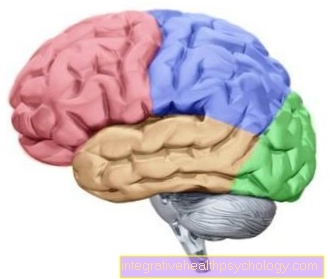Xylocaine
introduction
Xylocaine is a topical anesthetic (local anesthetic). Applied externally or applied in tissue it enables minor medical measures such as sewing to be carried out safely and painlessly. Xylocaine can also be used by experienced users to numb larger areas by specifically numbing nerves. Furthermore, xylocaine is a drug that has an effect on the heart and can be used against arrhythmias.
Read more about the topic here: Local anesthetics - the local anesthetic

Indication for xylocaine
Xylocaine is a frequently used local anesthetic to ensure freedom from pain during minor procedures. After use, the drug works after a few minutes and the effects last about one to two hours. The drug is used either in the form of infiltration anesthesia, whereby the active ingredient is injected directly into the tissue to be anesthetized in order to numb a small area locally. This is used, for example, for sewing a cut, whereby several xylocaine depots are placed around the wound edge through a puncture channel in order to achieve continuous anesthesia.
In addition, conduction anesthesia can be performed with xylocaine. Here, xylocaine is injected in the immediate vicinity of a nerve, which numbs it. For example, by infiltrating several nerves, it is possible to switch off the sensation of pain in the entire arm, so that larger operations that otherwise require general anesthesia can also be performed with regional anesthesia. The disadvantage of this procedure is its limited reliability, so that if the regional anesthesia does not work, it is sometimes necessary to switch to general anesthesia.
Xylocaine is the most widely used anesthetic in dentistry, where a conduction anesthesia of the supplying nerves is also often performed. The drug is also available - sometimes in combination with other local anesthetics or other additives - as a spray for numbing the skin or mucous membranes. For example, pain and gag reflex can be suppressed before a gastroscopy. In addition, a xylocaine-containing lubricant is used when inserting ventilation tubes before general anesthesia. The xylocaine has the function of preventing a sore throat after waking up.
You might also be interested in: Local anesthesia at the dentist
A less common procedure is the local intravenous application of xylocaine. Here, for example, a foot that is to be anesthetized is dammed up so severely that no blood can flow back into the body. The local anesthetic is then injected into a vein and is only distributed in the foot and ensures even anesthesia. This procedure is less demanding than conduction anesthesia, but has more potential side effects due to its use in the blood system. Xylocaine is also used as a drug against cardiac arrhythmias, whereby the otherwise undesirable systemic effect is specifically brought about. Compared to other drugs, xylocaine has the advantage of a frequency filter effect, so that a more slowing effect occurs at a high heart rate than at a lower frequency.However, due to the side effects, it is now rarely used. Xylocaine can also be used in neural therapy, a scientifically not or only partially proven application, with the aim of temporarily numbing tissue or nerves to achieve a permanent therapeutic effect for certain complaints.
Interactions
Interactions of xylocaine with other drugs usually occur with injections into the blood system and are rather rare when used as a spray or ointment. The combination with other heart-acting drugs such as antiarrhythmics and calcium channel blockers can intensify or weaken the respective effects. A combination of the injection with adrenaline increases the effect of xylocaine, which is often desirable. The same applies to the use of antihypertensive beta blockers, narcotics and sedatives. Antiepileptic drugs make xylocaine less effective. The effects of muscle relaxants can be enhanced by xylocaine. The effect of antibiotics of the sulfonamide class is reduced by xylocaine.
Xylocaine and alcohol - are they compatible?
There are no known interactions between xylocaine and alcohol, so no particular caution is required when using xylocaine under the influence of alcohol.
Will it affect the effectiveness of the pill?
There is no evidence that xylocaine affects the pill's effectiveness.
Use during pregnancy and breastfeeding
The superficial treatment with local anesthetics during pregnancy and breastfeeding is usually unproblematic, as hardly any active substance is absorbed into the circulation. During pregnancy, however, xylocaine should be avoided as a matter of principle and the local anesthetics articaine, bupivacaine or etidocaine should be used as xylocaine crosses the placenta and insufficient data are available to guarantee safe use. Xylocaine is not transmitted through breast milk, so there is no contraindication. The superficial treatment in the breast area should, however, be avoided.
Xylocaine ointment
As an ointment, xylocaine can be used on the skin and mucous membrane - for example as anesthetic for smaller (cosmetic) procedures on the skin or when piercing piercings. When used on the skin, however, the ointment has to act for about an hour, depending on the exact composition - this process only takes a few minutes on the mucous membrane. Another area of application for the ointment is premature ejaculation in men. Xylocaine ointment is applied to the glans before sexual intercourse to make it less sensitive to tactile stimuli and thus to support a delayed effusion. The exposure time is about half an hour. The effect of the ointment lasts for about one to two hours.
Find out more about lidocaine as an ointment here.
Xylocaine spray
Xylocaine is used in dentistry, ear, nose and throat medicine and gynecology as a spray to numb the mucous membrane (especially the oral, pharynx, throat and vaginal mucosa). Indications for this are minor surgical interventions, endoscopies such as gastroscopy and wound care for the affected mucous membranes. Xylocaine spray can also be used to numb the larynx during endotracheal intubation, i.e. when a ventilation tube is inserted into the throat. The spray has to act for a few minutes and the effect lasts for about ten to 15 minutes.
You can find a lot more information under our topic: Lidocaine spray
gel
Xylocaine is also used as a component of a lubricant gel, which facilitates the insertion of endoscopes, ventilation tubes and urinary catheters. The use of this gel should enable easier gliding and reduce the risk of injury; on the other hand, the addition of xylocaine should have a numbing effect on procedures that are perceived as unpleasant.
Active ingredient and effect of xylocaine
The name of the active ingredient is lidocaine. Xylocaine is just the most widely used trade name in Germany. Xylocaine works by blocking sodium channels in the cell membrane of nerve fibers. These sodium channels are crucial for the electrical transmission of signals in nerve cells. Since fibers that transmit temperature and pain are thinner and easier to penetrate than fibers that convey touch or movement, temperature and pain are initially no longer perceived when anesthetized with xylocaine, complete loss of sensation and muscle paralysis only occur when the patient is more concentrated.
If xylocaine is not applied locally, but via the blood system throughout the body's circulation, it also acts on sodium channels in the heart and brain. Therefore, xylocaine is also used as a drug against cardiac arrhythmias and can cause disorders of these organs if accidentally injected into a blood vessel or if overdosed. A frequently used combination is xylocaine and adrenaline. Adrenaline has a strong blood circulation-reducing effect, so that the xylocaine has a stronger local effect and less penetrates into the blood system.
Side effects
Common side effects of injecting xylocaine are skin irritation, redness, and burning sensation, which usually go away when the anesthetic is on. It can also cause pain and an increase in blood pressure. Rare side effects include hypersensitivity reactions with hives and side effects on the heart and brain when accidentally injected into a blood vessel. These side effects include persistent dizziness, tingling sensation, ringing in the ears, disorientation, blurred vision, tremors, convulsions, loss of consciousness, breathing disorders, tissue retention, drop in blood pressure, aggravated cardiac arrhythmia, circulatory disorders, airway spasms, shortness of breath, persistent paralysis, and sensory disturbances. If the dosage is too high, xylocaine can be fatal.
Read more about the topic here: Side effects of local anesthesia
dosage
The dosage of xylocaine depends heavily on the purpose and form of use. Basically, a distinction must be made between a local use as an anesthetic and the use of xylocaine as a cardiac drug when administered intravenously - for the latter, the recommended dosage is around 1-1.5 mg / kg body weight, at 80 kg body weight this corresponds to 120 mg.
With local anesthesia, a systemic effect is expressly undesirable. However, small amounts of the drug always get into the circulation, this effect is differently pronounced at different sites of action. When used in subcutaneous fatty tissue with poor circulation, less active substance enters the circulation than, for example, when used in the pleura. The general recommendation is not to exceed a daily dose of 200mg. If xylocaine is injected together with adrenaline, which locally reduces blood flow, a total dose of 500 mg can be administered. With these guide values for adults, however, individual properties such as body weight should be taken into account.
Xylocaine is used as a 0.5-5% injection solution or ointment, depending on the intended use.
price
Xylocaine is not patented and is therefore also available as a generic. The price depends on the dosage form and the manufacturer.
Can you buy xylocaine without a prescription?
Xylocaine, like all local anesthetics, requires a prescription due to possible serious side effects. However, there are exceptions to this rule, such as xylocaine-containing drugs for use on the skin and mucous membranes are available without a prescription, as long as they are not intended for use on the eyes, the external auditory canal and for the treatment of pain after a herpes zoster infection. Xylocaine with concentrations of up to 2% for setting wheals as part of neural therapy are also exempt from the prescription requirement, and xylocaine for injection for perineal cuts and perineal ruptures may be given to midwives and obstetricians.
Alternatives to xylocaine
As an alternative to xylocaine, one of the numerous other local anesthetics can be used for local anesthesia. These differ, for example, in the time of attack, the duration of action and the ability to penetrate different tissues. In the case of allergies to xylocaine, it should be noted that it is a local anesthetic of the amide type. Alternatively, an ester-type local anesthetic such as procaine would be used. However, they all have a higher allergenic potential than xylocaine. In addition, allergic reactions to xylocaine are mostly based on additional substances in the medication.
A fundamental alternative to the use of local anesthetics is of course general anesthesia, although this should be used very cautiously due to the risks involved in small interventions. There are various alternatives as a drug against cardiac arrhythmias. Depending on the arrhythmia, drugs such as ajmaline, amiodarone or propafenone can be used. Another alternative is electrical antiarrhythmic therapy with an implantable pacemaker / defibrillator.
You might also be interested in: General anesthesia - procedure, risks and side effects

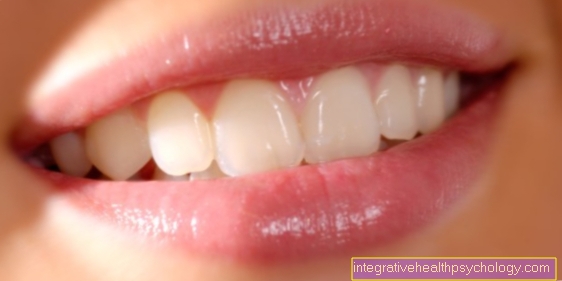
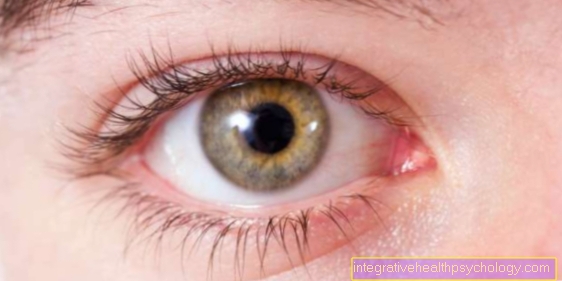


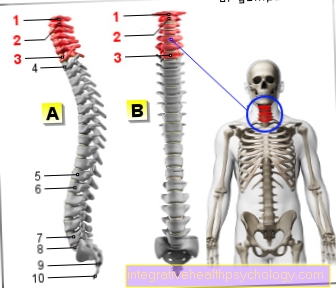
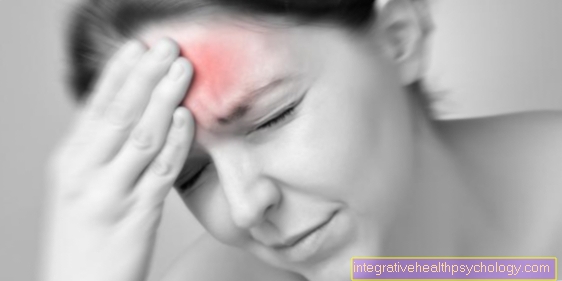
.jpg)
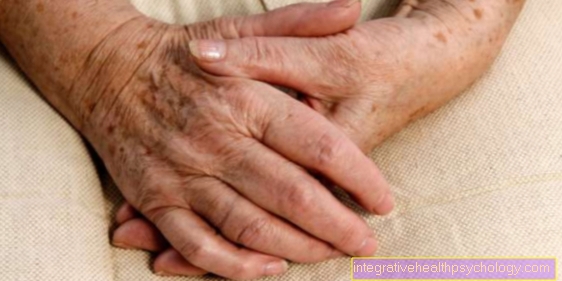
.jpg)











